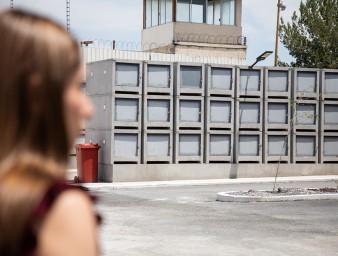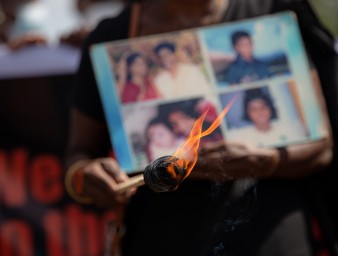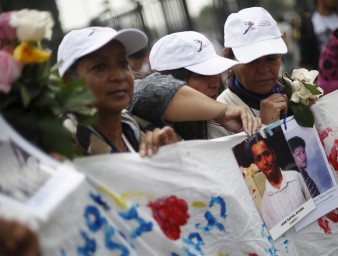Disappearance is “a wound that never heals”
31 March 2023

Izabel Lopez Raymundo’s story in the pantheon of tales of disappearances is that of being a collateral damage.
It was June 13, 1982, when the military regime of Efrain Rios Mont surrounded the village of Nebaj, where she lived in Guatemala. The military was following the scorched earth policy of destroying all in sight. They set fire to the houses; shot a man protesting the fires in front of his home; the son stood in front of his family to protect them and was also shot. The mother was taken to the back of the house with a baby on her back and was shot close range. The bullet killed the mother, but lodged in the baby’s body. A soldier took the baby, under the pretext of saving her and was placed in an orphanage. The baby was later adopted and moved to Belgium, where she grew up.
The baby, now grown, is Lopez. She has a scar on her chest where the bullet went in, “as if to say ‘never forget,’” Lopez said. It was this scar that helped her remaining family to eventually identify her.
Lopez told her story during the recent session of the Committee on Enforced Disappearances (CED). The Committee routinely hears or reads testimonies from families and other survivors of enforced disappearances.
"I am testifying today as a tribute to my family, which was coldly massacred, and also as a tribute to the victims of the war who were made to disappear,” Lopez said. “These families who have to rebuild and live with the physical and psychological pain caused by the massacres but also the disappearance of their loved ones. I testify in the hope that things will change, and that this will not happen again."
When a child is victim of wrongful removal, he or she is deprived of their family memory, said committee member Juan José López Ortega. Stories such as Lopez’s helps to remember that children too can be victims of enforced disappearance.
“This moving story allows us] to draw attention to the importance of the Convention to this Committee and the States to take all necessary measures to prevent the enforced disappearance of children,” he said. “When a child suffers such acts…all the information essential to identify is hidden and disappears. Family memory is an essential asset, to which we are all entitled and of which no one should be deprived.”
For Lopez the process to finding her biological family started in 2008, when she received a letter from the Guatemalan association La Liga Guatemalteca de Higine Mental. The group searches for children of the disappeared during the years of armed conflict. Lopez matched reports filed by her biological family. However, the death of her adopted mother in 2009 temporarily halted the process.
"When Alexy, my first child, was born in 2017, I had a feeling of guilt,” Lopez said.” I resolved to reconnect with my biological family. My children are more like me than their father, so they are little Mayans who have the right to know where they come from."
Lopez reached out the La Liga, and managed to find her sisters. The got in contact first via phone and later using video calling. It was Lopez’s sister Petrona who initiated the search and recognized Lopez during their first video conference. The two sisters looked nearly identical, Lopez said. Her older sister Ana would later see her and weep with joy. After 40 years of searching, they found their baby sister.
In 2019, Lopez’s daughter Alicia was born. Sometime later, her biological sister Ana, the same one who had carried her while she was between life and death as a baby, sent her a scarf from Guatemala. Lopez decided to use it to carry Alicia on her back and to take a picture. A simple and strong image to reconnect with her culture, but also "to symbolically represent us, mom and me", this time without a bullet or a scar, she said.
Lopez said she lives with the physical scar caused by the bullet that took her biological mother as a symbol of her rebirth, of death, but also of life.
"In my destiny, my greatest wound is also my greatest strength of resilience," she said. "Great suffering can lead to great peace, but when you are declared missing, you never heal. Our families cannot grieve without the knowledge of what we have become. And we, as a person who has been disappeared, are cut off from a part of our history, our being. Disappearance is a wound that never heals but we are never alone: all we have to do is smile at the right person.”



